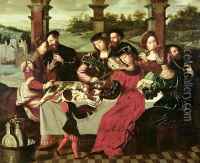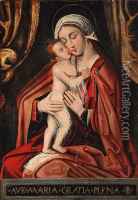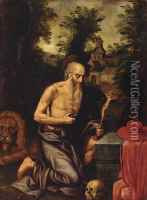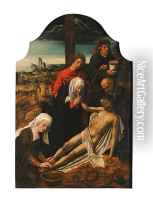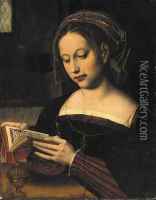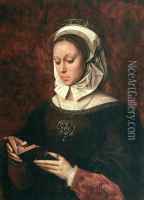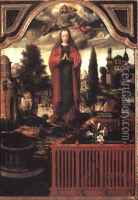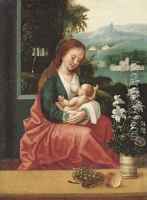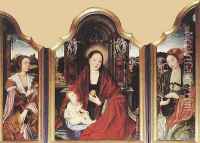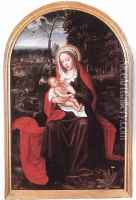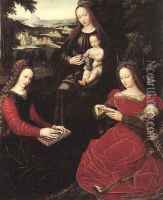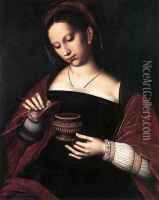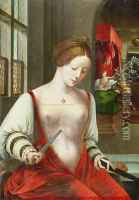Ambrosius Benson Paintings
Ambrosius Benson was an Italian painter of the Renaissance period who became a prominent figure in the Northern Renaissance, active mainly in the city of Bruges in present-day Belgium. He was born in Lombardy, Italy, around 1495, however, the exact place and date of his birth remain uncertain. Benson moved to Flanders, which was then a vibrant center of commerce and art, and by 1519, he became a master in the Guild of St. Luke in Bruges.
Ambrosius Benson's work reflects the influence of the Italian Renaissance, yet it integrates the stylistic elements and themes more commonly found in Flemish painting. His oeuvre includes religious subjects, portraits, and genre scenes. He was particularly known for his delicate and sensitive rendering of religious themes and his ability to infuse his subjects with a sense of piety and devotion, which resonated with the pious attitudes of the time.
Benson's style is characterized by a refined use of color and meticulous attention to detail, which can be seen in the textures of fabrics and the realistic depiction of materials. His compositions often feature serene and contemplative figures set against detailed landscapes or interiors. Benson was also noted for his skill in the use of light and shadow, which added depth and volume to his figures.
Throughout his career, Benson enjoyed a high level of commercial success and his works were sought after by wealthy patrons and collectors. His paintings were often small in scale, suitable for private devotion, which was a popular trend among the merchant class of the period.
Despite his success during his lifetime, Ambrosius Benson's work was somewhat overshadowed by the more famous Flemish painters such as Hans Memling and later Pieter Bruegel the Elder. However, his contribution to the Northern Renaissance and the development of Flemish painting is significant.
Benson's death occurred in Bruges in 1550. Today, his works can be found in various museums and collections around the world, where they continue to be studied and appreciated for their blend of Italian elegance and Flemish detail.
